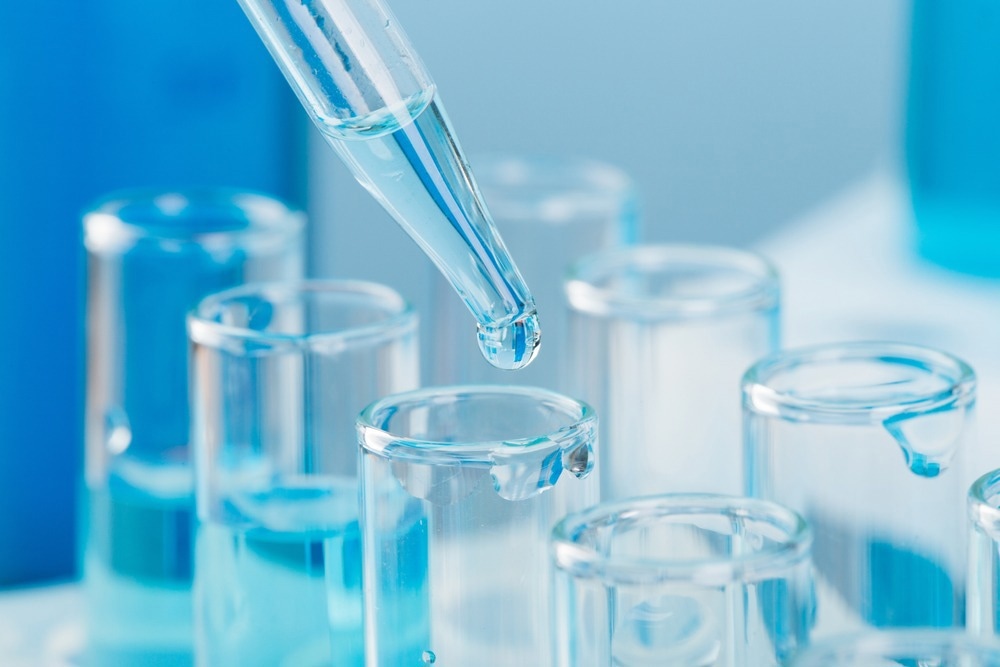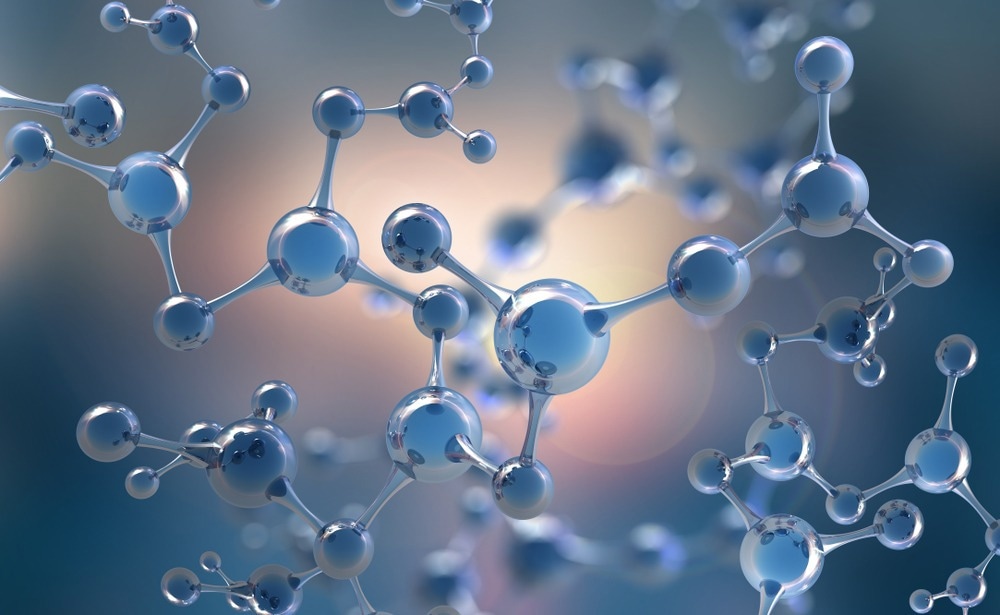From PittconReviewed by Danielle Ellis, B.Sc.May 22 2023
In this interview conducted at Pittcon 2023 in Philadelphia, Pennsylvania, we spoke to Dr. Jeffrey Dick about his work studying the chemistry of small volumes and nano-electrochemical tools.
What is your background, and what first attracted you to this field?
My name is Jeffrey Dick, and I grew up in Muncie, Indiana. I studied chemistry at Ball State University and fell in love with research and education.
I initially began my educational journey at Purdue University but decided that I did not want to become an engineer and moved back home. I then became involved with electric chemistry, which led me to Al Bard’s lab at UT Austin.
I started my independent career at UNC-Chapel Hill in 2018 and moved my entire group, including the nine Ph.D. students and a couple of postdocs, to Purdue University in 2022. The motivation behind this move was to become the first person in human history to make a major discovery in this field.
Curious Chemistry in Small Volumes: Unraveling the Complexities of Miniaturized Chemical Reactions
What is the definition of small volumes in chemistry?
‘Small volumes’ as a term in chemistry is still relatively ambiguous. For instance, the volume of the Pacific Ocean is estimated to be approximately one zettaliter, which means that it is 1.0 x 1021 liters.
On the other hand, a lysosome in a cell is on the order of an attoliter to a zeptoliter - 40 orders of magnitude different in volume.
Thus, it is really important to define the dimensions of the volume. When I say very tiny volumes, things that can fit inside a cell are certainly in that category.
What are the current limitations when studying the chemistry of these really small volumes?
The current limitations include having a high enough spatiotemporal resolution to make accurate measurements. Although we can conduct measurements in a beaker, a beaker does not necessarily represent our cells and the chemistry that happens within our cells. Moving forward, we have to be mindful of that.

Image Credit: Nana_studio/Shutterstock.com
Could you tell me how your work has enabled the study of reactions in these really small volumes?
Electrochemistry is a branch of science that we can use to detect down to a single attoliter droplet, which is 1.0 x 1018 liters. If you think of a sphere, it has a radius of about 100 or so nanometers. We can detect these one at a time and measure reactivity within those very tiny volumes, including lysosomes.
Electrochemistry is super-powerful in its sensitivity. As a measurement science tool, it can measure rates that span 12 orders of magnitude. We can probe interesting chemistry in these tiny volumes using electrochemistry.
Why is it important to study the chemistry of small volumes?
It is important to study the chemistry of small volumes as it helps us understand some very important biological processes and how life began from a prebiotic standpoint. These tiny volumes have been shown to drive thermodynamically unfavorable reactions for reasons that many researchers are still trying to figure out.
How has the interaction between chemistry, biology, and nanotechnology evolved in recent years?
This relationship has evolved quite a bit. Nanotechnology itself has exploded massively over the last 50 years. What I mean by nanotechnology is our ability as a society to see and manipulate things at the nanoscale.
We have many new tools that have been developed over the past 50 years, and as a result of these new measurement tools, almost every published paper has a main claim that is at least partly validated by measurement. Creating new ways of making measurements puts you on the frontier.

Image Credit: Yurchanka Siarhei/Shutterstock.com
The intersection between nanotechnology and biology is quite apparent, particularly when studying the processes in single cells, organoids, or spheroids. This intersection also comes into consideration when we put sensors in moving animals to study pharmacokinetics and individualized medicine.
Chemistry also comes intertwined, particularly when we need to be able to understand the complex reactions happening in biological systems. This relationship goes beyond biology to include aspects of the environment, planetary studies, and aerosols.
What are nano-electrochemical tools?
Nano-electrodes are probes on the order of tens to hundreds of nanometers, and they can easily be made using laser-pulling technology. If you have a glass capillary and put it in a wire, you can simultaneously melt the capillary and wire. Then, once that is melted, it will pull apart, leaving you with two very sharp electrodes.
We have ways of polishing these electrodes. We can use a disc surrounded by an insulator, or even a cylinder. For example, Mark Wightman has been known to put cylinders into rat brains to study dopamine and fast-scan cyclic photometry.
Nano-electrochemical tools can be used to build electrodes for observing nanoscale phenomena. However, a nano-electrode is not necessary. You can also use a microelectrode and study nanoparticles one at a time.
What are the main challenges within the development of such tools?
The main challenge in developing these tools is encouraging students to get involved, as experiments involving such tools can be rather tricky. Some other challenges can also arise when creating sensing modalities to make new measurements.
Advances in Nanoelectrochemistry: Enabling New Discoveries in Small Volume Chemistry - Jeffrey Dick at Pittcon 2023
Video Credit: Pittcon
However, this challenge can also be seen as an opportunity. Many different things can happen in that space if we alter a few things, such as the nanoparticles or nano-electrode you are using or whether you decide to introduce flow or microfluidics.
What does it mean to be this year’s recipient of the Pittsburgh Conference Achievement Award?
I am very honored to be the 2023 recipient of the Pittsburgh Conference Achievement Award, as some of the past winners of this award are truly amazing and inspiring people.
I have been coming to Pittcon for several years now. My first experience was as an undergraduate student, where I met was able to meet some of my electrochemistry heroes like Al Bard, Bill Heineman, Mark Wightman, and Royce Murray. Thus, it is huge to be recognized for my own contributions to the field.
What are you currently working on that you are excited about?
I am working on many things. I have a multifaceted lab comprising about 19 people, all of whom are either studying single-cell metabolomics or single-cell pharmacokinetics. In other words, they are studying the reactions that take place in tiny volumes and how to collect and quantify single aerosol droplets and single electrospray particles.
We are also building sensors for environmental micropollutants and studying new chemical reactions at interfaces. These interfaces can be incredibly complex. We are also trying to understand why nature has to build microcompartments and force compartmentalization.
As a team, we are constantly carrying out exciting experiments. For instance, one day, I was blowing bubbles with my daughter, wondering how thick the wall of the bubble was. The next day I was in the lab with my students spending two days exploring how we could use electrochemistry to accurately measure the bubble wall's thickness.
To do this, we put microwires in the bubbles and conducted simulations and electro-deposition. We then applied Beer’s law and calculated the path length to get the thickness of the bubble. At the end of the working day, I was able to go home and tell my daughter, “The wall of a bubble is as thick as a strand of your hair.”
Eventually, we started using the bubble walls like a butterfly net to capture aerosols and detect methamphetamine, fentanyl, and other drugs and illicit substances.
There are two schools of thought in science. One is that necessity is the mother of invention, but I tend to work toward invention being the mother of necessity. It is a fun, creative environment to make discoveries.
What are you looking forward to most about Pittcon 2024 in San Diego, CA?
I am most looking forward to taking all my students to the conference and showing them the science that is happening in the world. Pittcon also has a Society of Electroanalytical Chemistry (SEAC), an amazing vehicle that brings together young people in the field of electroanalytical chemistry.
Outside of SEAC, Pittcon is also a great environment to meet up with other experts in the field. It goes beyond just science, as the social aspect is also lovely.
How does it feel to be at Pittcon in person interacting with other researchers?
Being back to in-person events feels wonderful. Having things online throughout the pandemic meant we could stay in touch and continue communicating our science. However, face-to-face interactions are an integral part of science, bringing analytical chemists of different types together.
At events like Pittcon, we can start discussing some of the limitations in electrochemistry and establishing solutions to help overcome them.
About Dr. Jeffrey Dick
Jeffrey Dick earned a BS in Chemistry from Ball State University in 2013 and a Ph.D in Chemistry from the University of Texas at Austin in 2017. Jeffrey started his independent career at the University of North Carolina at Chapel Hill in 2018 and is currently the Richard B. Wetherill Associate Professor of Chemistry at Purdue University.
Jeffrey started his independent career at the University of North Carolina at Chapel Hill in 2018 and is currently the Richard B. Wetherill Associate Professor of Chemistry at Purdue University.

This information has been sourced, reviewed and adapted from materials provided by Pittcon.
For more information on this source, please visit Pittcon.
Disclaimer: The views expressed here are those of the interviewee and do not necessarily represent the views of AZoM.com Limited (T/A) AZoNetwork, the owner and operator of this website. This disclaimer forms part of the Terms and Conditions of use of this website.